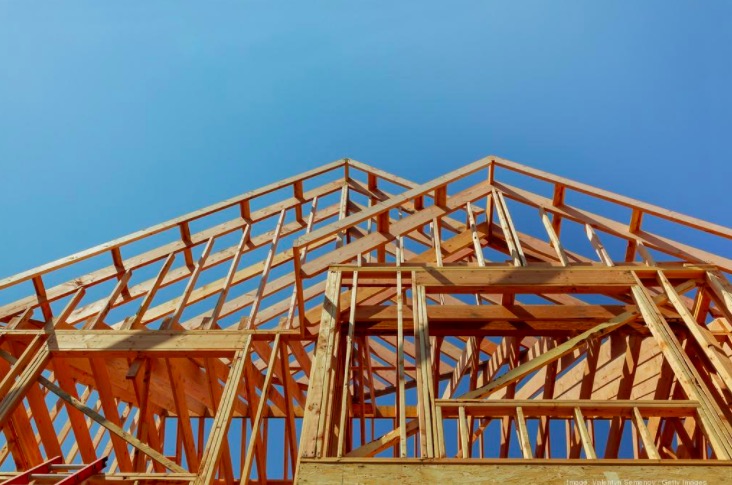New construction continues to sell at a premium to resale homes, but there’s now a record share of new homes on the market relative to existing houses.
Seattle-based Redfin Corp. (NASDQ: RDFN) found the share of newly built single-family homes on the market hit a new high at the end of 2021, bolstered in part by homebuilders trying to keep up with demand for housing across the U.S.
In fact, 34.1% of single-family homes on the market in December were new construction, up from 25.4% a year earlier and representing the highest share on record, Redfin found. Newly built homes were 21% of the market in December 2019.
That could be, in part, because December tends to be a slower month for people listing their homes on the market. But the growing share of new-construction homes relative to existing inventory also suggests an increase in new construction and continued constraint in the resale market.

“A lot of pre-owned homes are being listed, but they are just selling off so quickly — typically in a matter of days — while new homes take longer to sell,” said Sheharyar Bokhari, an economist with Redfin, in a statement. “So, as a homebuyer, you’re increasingly likely to see new builds when you look up homes for sale in your target area.
A Redfin economist couldn’t be reached by deadline for additional context.
Among the largest metro areas, Houston has the biggest share of new homes relative to existing homes in the nation, at 39.5%, according to Redfin. That’s followed by Minneapolis, at 38.3%, and San Antonio, with 37.5%.
Despite new construction making up a larger share of homes listed in December, Redfin found the share of home sales that are new builds has remained relatively flat, around 11%.
An estimated 762,000 new single-family homes sold nationally in 2021, according to the U.S. Census Bureau and the Department of Housing and Urban Development. That’s 7.3% less than 2020, when about 822,000 newly built homes sold. Meanwhile, existing-home sales totaled 6.12 million in 2021, a 8.5% jump from 2020, according to the National Association of Realtors.
Danny Hill, senior vice president and head of homebuilder finance at Birmingham, Alabama-based Regions Financial Corp. (NYSE: RF), said the typical premium for buying a new versus an existing home is historically 15% to 20%. That rose to about 30% in 2017 and has hovered around 30% through 2020, the start of the Covid-19 pandemic.
That premium has since widened, with supply-chain issues and spikes in pricing, particularly lumber, Hill said.
“But one thing that works in new homebuilders’ favor is the availability, or lack thereof, of existing home inventory,” he continued. “There’s not that much inventory out there to compare new homes to, first of all.”
Changes in buyer preferences since the pandemic — more space to work remotely, for example — are also affecting how new-versus-resale homes are viewed, he said. Though builders face myriad challenges, they are more quickly able to respond to new buyer demands and preferences than existing homes might.
As people spend more time at home, there could be more of a justification for buying a new home at a premium, Hill said.
The Article is from Austin Business Journal, copyright belongs to owner





